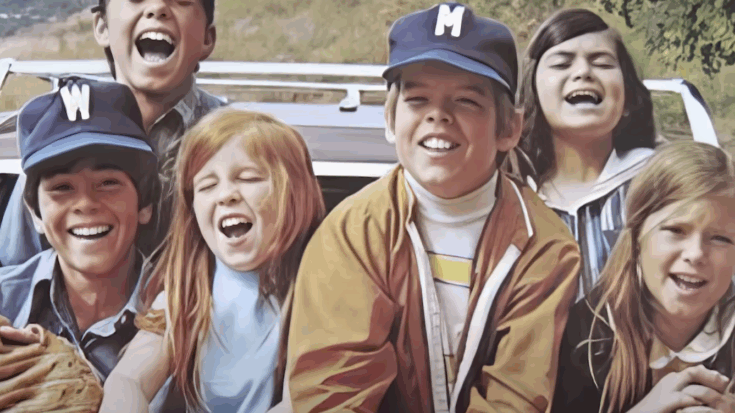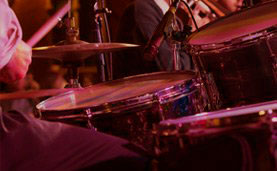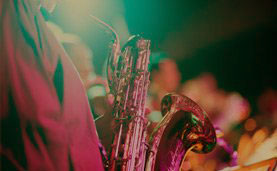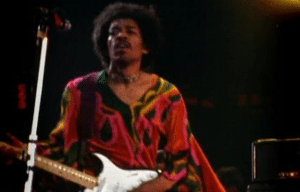15 1970s Things Kids In 2025 Will Never Understand

via Memory Trails / YouTube
Childhood in the 1970s carried a rhythm that feels almost alien to kids growing up in 2025. Days stretched long without the pull of screens or social media, and entertainment came in the form of neighborhood games, Saturday morning cartoons, or spinning the radio dial to find the latest hit. It wasn’t about scrolling or streaming—it was about being fully present in the moment, with simple joys shaping the heart of growing up.
What made those years unforgettable wasn’t just the toys or the trends, but the slower pace of life that naturally brought people together. Families gathered for dinner without the distraction of buzzing phones, and kids found adventure in the backyard or down the street, often creating their own fun from whatever was around. The absence of constant digital connection made human connection all the stronger, weaving memories that still stand vivid in the minds of those who lived them.
Looking back now, the 1970s feels like a snapshot of a world that has slipped through our fingers—a time when imagination, curiosity, and community were the cornerstones of childhood. For today’s kids, many of these experiences may sound quaint, even puzzling. Yet for those who remember, they represent some of the most treasured moments of growing up. This article takes you through 15 of those things from the ’70s that kids in 2025 will never quite understand.
Riding in the Back of the Station Wagon
One of the most vivid memories for kids of the 1970s was piling into the back of a station wagon. With no seatbelts required and no booster seats in sight, children had the freedom to sprawl out across the carpeted floor or lean against the wide rear windows. Road trips felt like mini adventures, with the view of the open road rushing past becoming part of the fun. It was less about safety features and more about the thrill of being together on the move.
These cars weren’t just a mode of transportation — they were extensions of family life. Whether crammed with camping gear, groceries, or kids headed to a ballgame, the station wagon was a rolling hub of activity. Siblings might pass the time singing along to the radio, inventing games, or bickering as only siblings could. The cramped space created a closeness that kids today rarely experience during car rides.
For children in 2025, this might sound reckless or even unsafe, but in the 1970s it was simply normal. Riding loose in the back of the wagon captured the carefree spirit of childhood in that decade, where less worry and fewer rules gave kids a sense of adventure and freedom now difficult to replicate.
Covering School Books with Grocery Bags
Before digital tablets and pre-made covers, kids in the 1970s had a ritual every school year: wrapping their textbooks with brown grocery bags. It was an economical way to keep school-issued books from falling apart, but it also became an art project. Students often doodled on the blank brown canvas, personalizing their books with names, band logos, or colorful designs.
The process itself was part of the memory. Parents would help cut open the bags and carefully fold them around each book, taping corners neatly to keep the cover snug. It was a mix of practicality and pride, as kids started the school year with freshly wrapped books ready to face months of wear and tear. The effort put into something so simple highlighted how resourcefulness was part of everyday life.
To kids in 2025, the idea of wrapping a book in a grocery bag might feel pointless when so much of schoolwork now happens online. But this tradition reminds us of a time when resourcefulness and creativity blended into daily routines, turning even plain paper bags into tools of expression.
S&H Green Stamps
Trips to the store in the 1970s often came with more than just groceries. Families collected S&H Green Stamps, handed out at checkout counters as part of a loyalty rewards program. Each book of stamps slowly filled up with careful pasting, creating a sense of progress toward something bigger. The promise of eventually trading them for a toaster, toy, or household good made even mundane shopping trips more exciting.
Collecting the stamps often became a family activity. Kids helped lick and stick stamps into the books, while parents kept an eye on how many more were needed for the reward catalog. The anticipation of finally redeeming them turned saving into an adventure, one that tied everyday purchases to long-term goals. It was patience rewarded in the most tangible way.
In 2025, kids are used to instant results—points accumulate automatically, rewards appear with a click. The idea of saving little paper stamps over months just to earn a blender feels foreign. Yet S&H Green Stamps embodied a slower, more deliberate kind of consumer culture, where small efforts added up to something meaningful.
Telephone Party Lines & Long Cords
For families in the 1970s, the home phone was a shared fixture, and in some households, even the phone line itself was shared. Party lines connected multiple homes, meaning neighbors could sometimes overhear conversations. This lack of privacy was both an inconvenience and a quirk of community life, teaching kids early on to be mindful of what they said and when they said it.
Phones themselves were tethered to walls, with long coiled cords dictating where you could stand or sit during a call. Teenagers stretched cords into hallways for a bit of privacy, while others sat cross-legged near the phone stand for hours. The physical restrictions created an awareness that conversations weren’t limitless—both time and space placed natural boundaries on how long you could chat.
Fast-forward to 2025, and the concept seems almost absurd. With wireless earbuds, video calls, and private lines everywhere, today’s kids can’t imagine having to share a phone line with neighbors or being anchored to the wall while talking. Yet for those who lived it, the quirks of party lines and long cords remain charming reminders of a less isolated, more communal way of communicating.
The Absolute Best Decade of Music
Ask anyone who grew up in the 1970s, and they’ll likely tell you that it was the greatest decade for music. Rock, soul, funk, disco, and folk all flourished, with artists like Led Zeppelin, Stevie Wonder, and Fleetwood Mac defining the soundtrack of the time. Music was more than entertainment—it was culture, identity, and in many ways, rebellion. Kids didn’t just listen to music; they lived it.
Part of the magic came from how the music was experienced. Vinyl records spun on turntables, cassette tapes were carefully recorded from the radio, and kids would memorize lyrics by rewinding until they got it right. Concerts and TV shows like “American Bandstand” gave young people shared moments of excitement, building connections through sound. The effort involved made the experience more rewarding and memorable.
Today, kids in 2025 can pull up any song instantly on streaming platforms, but the sheer abundance sometimes dulls the impact. In the 70s, having a favorite band or album meant devotion—it was earned, not delivered by an algorithm. That’s why the music of the 70s still feels like a cultural cornerstone: it was created, consumed, and celebrated in a way that left an imprint generations later.
Playing Outside Without Digital Distractions
For kids in the 1970s, the outdoors was the ultimate playground. Long afternoons were filled with bike rides, tree climbing, and endless games of tag, all without the pull of video games or smartphones. Parents trusted their children to roam freely with little supervision, expecting them to return once the streetlights flickered on. That kind of independence defined the era, giving kids both freedom and responsibility in equal measure.
Neighborhoods came alive with games like kick the can, capture the flag, and hide-and-seek. Any open lot or backyard could be transformed into an adventure zone where imagination was the only requirement. These unstructured playtimes fostered creativity, problem-solving, and social bonding among friends, all without the pressure of schedules or digital distractions.
For kids in 2025, the idea of spending entire days outside might feel unusual in a world dominated by screens. Yet the 1970s model of play highlights how simple outdoor adventures shaped resilience, friendships, and community ties that remain cherished memories for those who grew up in that time.
Roller Skates and Banana Seat Bikes
Few images capture 1970s childhood better than brightly painted banana seat bikes and clunky roller skates. With their long, padded seats and tall handlebars, banana bikes were both fashionable and practical, offering kids a sense of speed and individuality. Roller skates, whether quad or inline, gave children the thrill of gliding across sidewalks and driveways, making them staples of neighborhood fun.
These activities weren’t just pastimes—they were milestones of independence. Learning to balance on skates or take off on a bike was a rite of passage that kids proudly celebrated. Parents often encouraged this freedom, allowing children to explore neighborhoods on wheels, building confidence and coordination while giving them a taste of self-reliance.
To today’s kids, accustomed to electric scooters or immersive video games, the banana seat bike and classic skates might seem outdated. But for 70s kids, they were badges of freedom, proof that simple, physical joys could carry as much excitement as any digital gadget of the modern age.
The Dinner Table as Family Time
In the 1970s, dinner was more than a meal—it was an event. Families gathered around the table each evening to share stories, laugh, and discuss the day’s events. There were no phones to check or TVs to distract; the table was a space dedicated to connection, where conversations unfolded naturally alongside home-cooked meals.
Meals themselves often reflected the era’s slower pace, with recipes made from scratch and ingredients prepared by hand. These traditions created an atmosphere of stability and belonging, anchoring children in the rhythms of family life. Even simple dishes carried meaning when shared in the presence of loved ones.
For kids in 2025, who may be used to dining solo with headphones in or grabbing takeout on the go, this kind of family ritual might feel almost foreign. Yet it was precisely these nightly gatherings that created lasting bonds and memories, reminding us of how important intentional time together can be.
Saturday Morning Cartoons
For many kids in the 1970s, Saturday mornings were sacred. They’d leap out of bed at dawn, turn on the bulky family TV, and dive into hours of cartoons ranging from Scooby-Doo to Looney Tunes. The excitement came not only from the shows themselves but also from the anticipation—cartoons were a weekly treat, not an always-available option.
These mornings created rituals: kids huddled on the carpet in pajamas, cereal bowls in hand, while parents enjoyed a few extra hours of sleep. Because shows aired at set times, kids had to be ready and present, which turned viewing into a shared cultural moment. Talking about the latest episode at school was part of the fun, cementing cartoons as a social experience.
For kids in 2025, used to on-demand streaming and endless playlists, the idea of waiting a whole week for cartoons may seem unnecessary. But the fixed schedule gave Saturday mornings a special magic that made those shows unforgettable, embedding them into the collective memory of an entire generation.
https://twitter.com/Wayne_Jones2506/status/1855204274453569983
Manual Typewriters and Carbon Paper
Before laptops and tablets, the clack of manual typewriter keys was a familiar sound in homes and classrooms. Kids in the 1970s learned to write reports and essays by striking keys with force, imprinting letters directly onto paper. Errors couldn’t be erased with a backspace; correction fluid or a fresh start was the only solution, demanding patience and precision.
Carbon paper was another staple of the era, slipped between sheets to create instant duplicates. This simple yet ingenious tool allowed kids and adults alike to make multiple copies without the need for a printer. For school projects or family tasks, carbon paper was an everyday reminder of how resourceful people had to be before digital shortcuts existed.
To children growing up in 2025, the very idea of typing without spell-check or creating copies by hand might feel prehistoric. Yet these tools taught valuable lessons in discipline and care—traits that shaped how kids of the 70s approached both schoolwork and creativity.
Sprinkler Games and Barefoot Summers
Summer days in the 1970s often meant running barefoot through the sprinklers. With no need for elaborate water parks or inflatable pools, a simple garden hose and sprinkler provided hours of joy. Kids would dash through the streams of water, invent games, and laugh endlessly, soaking their clothes under the warm sun. It was childhood fun at its purest and most unstructured.
These games weren’t just about cooling off—they were about community. Neighborhood kids gathered in backyards, shrieking and chasing each other through the spray while parents watched from porches. The absence of constant oversight allowed children to roam freely, making friendships and memories in ways that felt both safe and adventurous.
For kids in 2025, it may be difficult to imagine finding so much happiness in something so simple. Yet for those who lived it, sprinklers on hot days were symbols of freedom, connection, and the kind of tactile, unplugged play that defined 70s summers.
Carbon Paper and Handwritten Copies
Before copy machines became widespread, carbon paper was the go-to tool for making duplicates. A thin, inky sheet placed between two pages allowed every word written or typed on the top sheet to transfer to the one beneath. Families and students relied on it for schoolwork, receipts, or household records, making it a small but essential part of daily life.
The process required care—pressing too lightly meant a faint copy, while too much pressure left smudges. Kids learned patience as they tried to create neat duplicates, and the mess of carbon-stained fingers became part of the ritual. What seems tedious today was, at the time, a clever workaround for homes and classrooms without access to machines.
In 2025, the very idea of needing such a tool feels antiquated. Copy-paste functions, printers, and scanners have eliminated the need for manual duplication. Still, carbon paper is a reminder of an era when even small tasks demanded more effort, turning everyday work into a tactile and disciplined activity.
Metal Lunchboxes and School Snacks
For many kids in the 1970s, no school day was complete without a metal lunchbox in hand. Decorated with superheroes, TV characters, or cartoon favorites, these boxes were both practical and a way to show off personal taste. Durable and reusable, they lasted for years, sometimes even passed down between siblings as a badge of pride.
Inside, lunches were usually homemade: peanut butter sandwiches, fruit, and a drink tucked neatly into the sturdy case. Kids carried them daily, comparing designs with classmates and sometimes trading snacks at the cafeteria table. Owning a lunchbox with a favorite character made it more than just a container—it was a piece of identity.
For today’s kids, accustomed to disposable bags, insulated containers, or even cafeteria apps, the metal lunchbox may seem unnecessary. But in the 70s, it was both a functional item and a cultural symbol, anchoring the rhythm of school days with a mix of style and routine.
Vinyl Records and Turntables
Music in the 1970s was inseparable from vinyl records and turntables. Listening wasn’t as simple as pressing play—it required carefully placing a needle on a spinning disc, handling the records with care to avoid scratches, and savoring the artwork on oversized album covers. Each record felt like a prized possession, both fragile and deeply meaningful.
Families and friends gathered around record players, treating music as an event. Kids memorized lyrics, argued over favorite songs, and experienced the anticipation of flipping the record to hear the rest of the album. The analog sound carried a warmth and richness that gave music a physical presence often missing in today’s digital formats.
For kids in 2025, who stream entire libraries from phones without a second thought, the process might feel slow or inconvenient. Yet for 70s kids, that ritual made every playthrough special, reinforcing why vinyl remains beloved even decades later.
Lawn Darts and Outdoor Games
Outdoor games were at the heart of 1970s childhood, ranging from simple classics like hopscotch and tag to riskier activities like lawn darts. With their heavy metal tips and large size, lawn darts demanded precision but often carried a real danger that would shock today’s safety-conscious parents. Despite the risks, they were wildly popular until eventually banned in the late 1980s.
These games brought families and neighbors together in backyards and parks, especially during summer gatherings and barbecues. Kids learned coordination, competition, and teamwork through active play. The rough edges of these games, from scraped knees to occasional accidents, were accepted as part of growing up.
For children in 2025, the idea of such risky games may seem reckless, even unthinkable. But lawn darts and similar pastimes reflect a 70s culture of freedom, where outdoor fun wasn’t always perfectly safe but was full of excitement, community, and independence.











